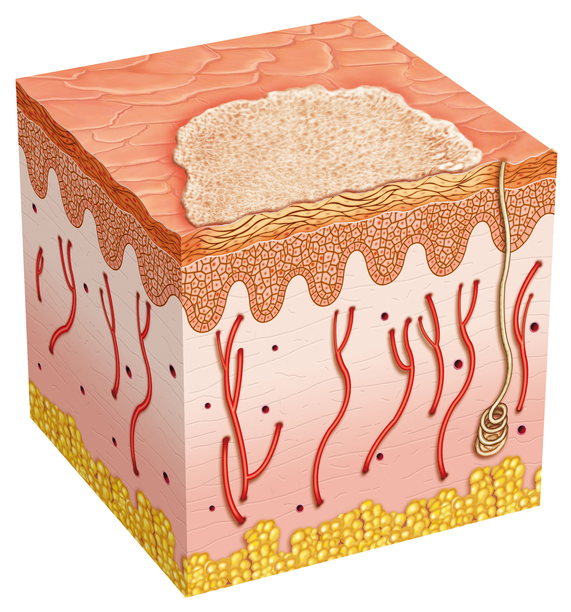
Researchers at Stanford University School of Medicine, in partnership with personal genetics company 23andMe, have identified 31 genetic associations for basal cell carcinoma, 14 of which were identified for the first time, in the largest study to date for the most common form of skin cancer. The results come one month after the same research collaboration detailed new genetic associations for another, more benign from of skin cancer, squamous cell carcinoma.
Using 23andMe customers who consented to the study and had reported having either basal cell carcinoma or squamous cell carcinoma, the Stanford researchers first conducted a genome-wide association study. This was followed by a confirmatory genome-wide association study using data from a different cohort, either the Nurses’ Health Study or the Health Professionals Follow-Up Study. In all, nearly 17,000 cases and 290,000 controls were used for the study.
The results confirmed 17 already-reported genetic associations for squamous cell carcinoma and identified 14 new susceptibility regions, which researchers said helped to explain the roughly 11% familial relative risk of developing the disease.
Other findings of note include:
- Genetic associations were found in gene regions involved in maintaining telomeres (the ends of chromosomes that either become too long or too short in many cancers), regulating the immune system and tumor progression, as well as those already thought to regulate skin cells;
- Basal cell carcinoma genetic susceptibility regions appear to exert a more significant effect in younger people, suggesting that environmental factors for basal cell carcinoma might become more influential with age; and
- Significant interaction between a genetic marker in a gene called LPP and hair color, specifically light brown and dark brown/black hair groups, suggests the LPP marker is exerting a bigger effect on risk for basal cell carcinoma in people with brown or black hair
The new research comes as 23andMe looks to expand from its traditional base of providing direct-to-consumer genetic testing services to also leverage both its technology and the data it has collected from its customers for disease research. Last month, it announced the launch of a new genotyping service for researchers that offers the company’s noninvasive saliva kit to help fuel the ability of scientists to more easily recruit patients nationally by shipping the 23andMe saliva kit directly to patients’ homes.
To date, 23andMe says it has more than 1 million customers worldwide, of which 80% have consented to participate in research.












